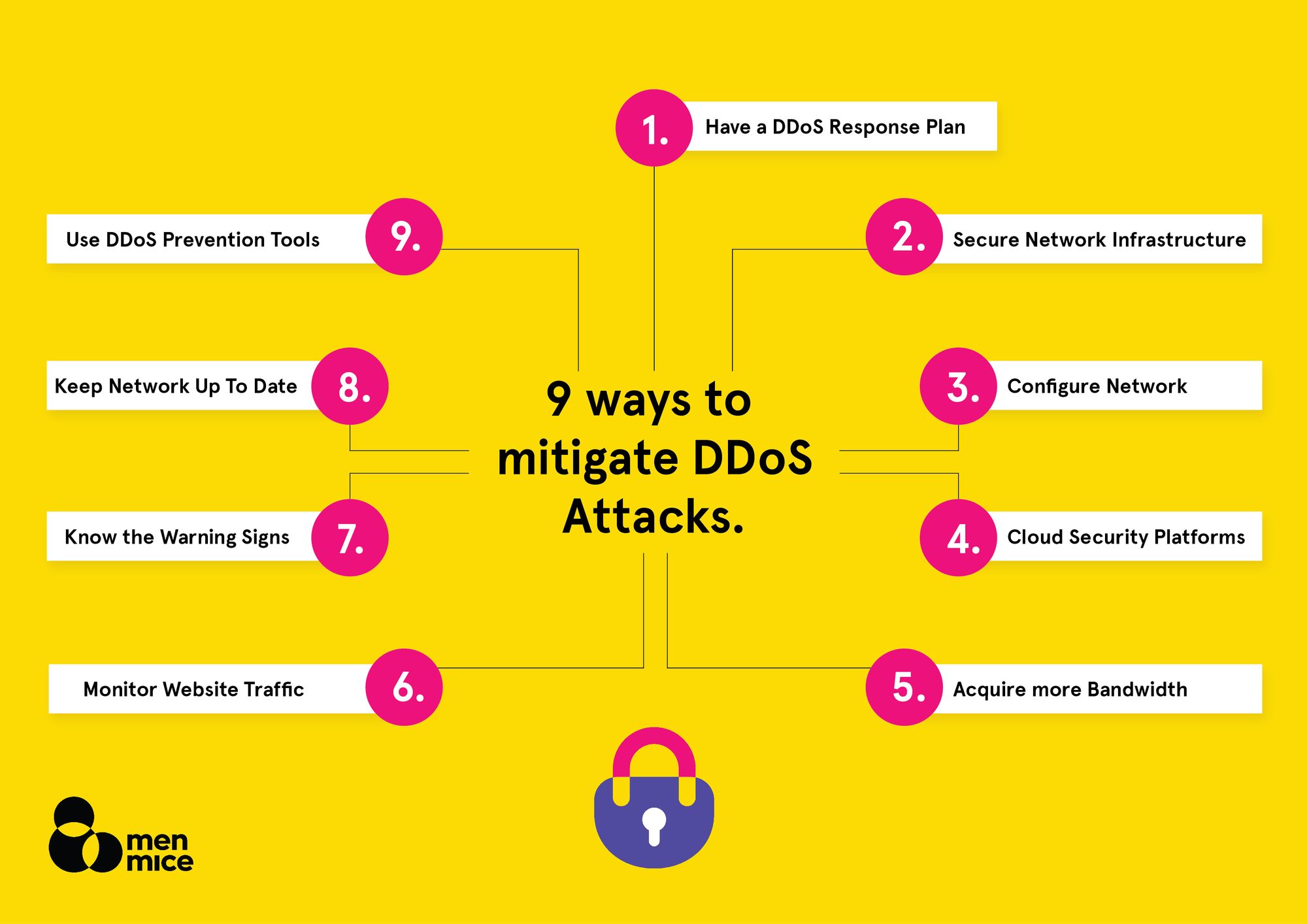9 ways to mitigate DDOS attacks
In this blog post, we will explore 9 ways to mitigate DDoS attacks and protect your business from this type of cyber threat.
Feb 27th, 2023
Distributed Denial of Service (DDoS) attacks are a growing threat to businesses of all sizes. These attacks involve overwhelming a website or network with a flood of traffic, making it difficult or impossible for legitimate users to access the targeted resource. In this blog post, we will explore 9 ways to mitigate DDoS attacks and protect your business from this type of cyber threat.

1) Have a DDoS response plan ready
Having a plan in place for dealing with DDoS attacks can help you respond quickly and effectively when an attack occurs. This plan should include steps for identifying and mitigating the attack, as well as procedures for communicating with customers and stakeholders.
2) Secure network infrastructure
Configuring your firewalls and routers to secure your network infrastructure is an essential step in preventing DDoS attacks. This includes setting up access controls, implementing intrusion detection and prevention systems, and configuring your network to prioritize legitimate traffic.
3) Configure network hardware against an attack
Network hardware such as load balancers and content delivery networks can be configured to help protect against DDoS attacks. By distributing traffic across multiple servers, these devices can help absorb the impact of an attack and keep your website or network accessible to legitimate users.
4) Leverage cloud security platforms
Cloud security platforms can provide an additional layer of protection against DDoS attacks. These platforms can detect and block malicious traffic, and also help mitigate the impact of an attack by redirecting traffic to other servers.
5) Acquire more bandwidth
Having more bandwidth can help to absorb the impact of a DDoS attack. By adding more capacity to your network, you can ensure that legitimate traffic can still get through even when an attack is taking place.
6) Monitor your website traffic
Keeping an eye on your website traffic can help you identify a DDoS attack in progress. By monitoring your website traffic, you can detect unusual spikes in traffic or other warning signs that may indicate an attack.
7) Be aware of warning signs
Slow access to files, either locally or remotely, a long-term inability to access a particular website, internet disconnection, problems accessing all websites, and excessive amount of spam emails are all warning signs of a DDoS attack. Being aware of these warning signs can help you identify an attack early and take steps to mitigate the impact.
8) Keep network systems up to date
Keeping your network systems up to date is an important step in preventing DDoS attacks. By staying current with security patches and updates, you can reduce the risk of vulnerabilities being exploited by attackers.
9) Use DDoS prevention tools
DDoS prevention tools can help to block malicious traffic and protect your website or network from DDoS attacks. These tools can be configured to automatically detect and block malicious traffic, and can also help to redirect legitimate traffic to other servers in the event of an attack.
Defend against DDoS with xDNS redundancy.
xDNS Redundancy mitigates DDoS attacks and other forms of DNS failure by providing centralized management of critical DNS services across multiple DNS service provider platforms.
Men&Mice xDNS Redundancy feature provides the abstraction level necessary to replicate and synchronize critical DNS master zones across multiple DNS service provider platforms, on-premises, in the cloud, or in hybrid or multi-cloud environments.